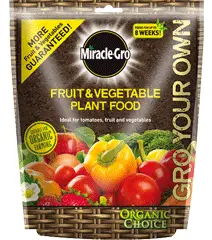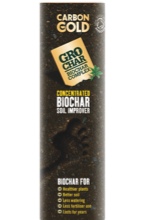Nutrients for Tomatoes
A major characteristic of organic food is that it has to be “converted” by bacteria before it can be absorbed by the roots of a tomato plant or any other plant for that matter.
Synthetic nutrients such as Tomorite and Chempac don’t have to be converted before they are taken up by roots, so are absorbed faster. This has both advantages and disadvantages.
Advantages of Synthetic Feed
- Able to be absorbed into a plant more quickly.
- Can be measured easily and appropriate amounts given.
One big disadvantage of using synthetic plant food is how easy it is to over-feed, especially with tomato plants.
Many commercial feeds like Tomorite contain both synthetic and organic nutrients (seaweed for example). It’s good for the plants and for sales if a bottle of tomato food has something “natural” on the front label!
Organic Growing
Growing tomatoes the organic way is becoming very popular and there are plenty of new organic products appearing on the shelves of the garden centres.
Advantages of Organic Feed
- Less likely to over-feed because organic food is broken down by bacteria – slowly.
- Improves soil quality by creating friendly bacteria and other microbes that work in conjunction with roots.
An important point to remember about organics is that soil needs to be a reasonable temperature, moist and well aerated to encourage the growth of friendly bacteria.
It’s easy to over-feed with synthetic food
The whole issue of feeding tomato plants can become a bit confusing for the caring tomato grower who wants to be kind to his or her plants.
A spoonful of this and a squirt of that and a large handful of the other, before you know, the soil has become a toxic confusion – a chemical brew!
One Organic Option
 Buy a ready made feed such as Miracle Grow fruit and veg general purpose organic food.
Buy a ready made feed such as Miracle Grow fruit and veg general purpose organic food.
It can be supplement later with a high potassium herbal feed like comfrey tea when plants begin to fruit.
Some herbal teas are now available in pellet form and liquid concentrate.
.
Another Option
Fish emulsion contains many nutrients, including micro nutrients. The biggest proportion of nutrients in liquid fish emulsion is nitrogen.
Seaweed extract contains many nutrients, including micro nutrients. The biggest proportion of nutrients in liquid seaweed extract is Potassium (potash).
Fish emulsion and seaweed extract make an excellent two part feed.
- Fish emulsion as a growth feed – heavy on the nitrogen and used up until flowering.
- Seaweed extract, ideal as a flowering/fruiting feed – heavy on the potassium and used in the fruiting stage.
Of course it’s important to have the soil/compost at a reasonable temperature and plenty of aeration for the soil microbes – they need oxygen too.
Warm, moist and well aerated soil, teaming with microbes that are turning the organic material into food that the roots can absorb, will have your tomato plants as happy as they can be!
 Friendly Fungi
Friendly Fungi
There are products available that add fungi and bacteria to soil such as Carbon Gold, available at half price from Webbs at the moment.
Also, the more expensive Mycorrhizal Fungi – just add a little to the root ball and the fungi do the rest! More info. here.
Worm castings are also available and excellent for encouraging soil microbes.
There’s a good feeling about growing organically. Often the tomatoes will taste better because of the complex nature of the natural food – but that’s a hot subject!
Also, disease prevention would need to be done organically if we are to call our toms fully organic and that’s a big challenge. Still, you have to be up for a challenge to be a tomato grower!
Keep your plants in the light, warm and dry, ’till next week.
Regards,
Nick
If you have any organic tips, please leave them below.
